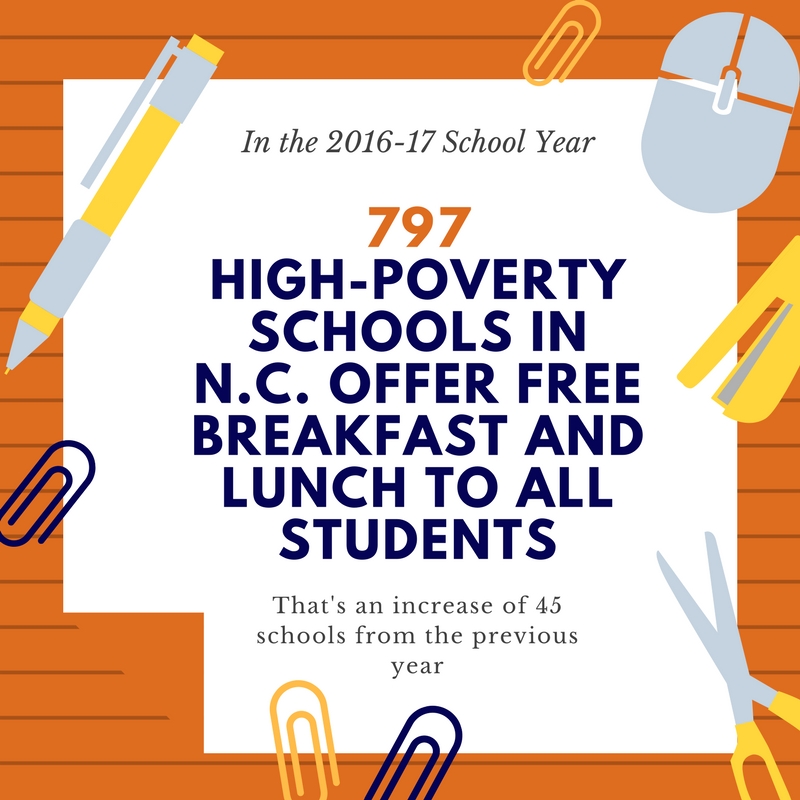Prosperity Watch (Issue 84, No. 3)
March 19, 2018
The School Breakfast Program is as an essential tool to ensure students have the nutrition needed to learn and succeed in the classroom. Breakfast participation continued to grow during the 2016-17 school year, according to the School Breakfast scorecard released on March 7 by the Food Research Action Center (FRAC). On an average school day in North Carolina, over 428,000 students participated in the School Breakfast Program; of these students, nearly 371,000 were low-income children who received a free or reduced priced (FRP) breakfast. North Carolina’s increasing rates has placed the state in the top 10 in school breakfast participation among all 50 states.
While participation is increasing, there are still many gains to be made to ensure all students have access to the academic and health benefits of breakfast programs. FRAC has set a national goal of reaching 70 low-income children with school breakfast for every 100 receiving school lunch. The report finds that during the 2016-17 school year, about 58 low-income children in North Carolina ate school breakfast for every 100 who received FRP lunch. This is somewhat above the national average of 56.7. In North Carolina, there are currently 33 school districts meeting FRAC’s goal. Of the top 10 districts in this category, 6 of them are in rural communities.


The high participation rates can be attributed to two vital strategies: The Community Eligibility Provision (CEP), and the implementation of innovative after-the-bell breakfast models. CEP allows high poverty schools to serve free and reduced priced meals to all students without having to collect, process, or verify school meal applications or track meals by fee. There are currently 797 high poverty schools in North Carolina adopting CEP, allowing them to offer free breakfast and lunch to all students. The breakfast after-the-bell models (Breakfast in the Classroom, Grab and Go, and Second Chance Breakfast), allows breakfast to be more accessible to students by implementing it into the school day. Offering breakfast after the school bell helps to combat the common barriers of stigma and lack of time.
The benefits of participation in the school breakfast programs are clear. Research shows that students who eat breakfast have better test scores, fewer absences, improved diets, and better overall health outcomes. When used together, the Community Eligibility Provision and implementing the innovative models will continue to increase participation in the state.
 Justice Circle
Justice Circle